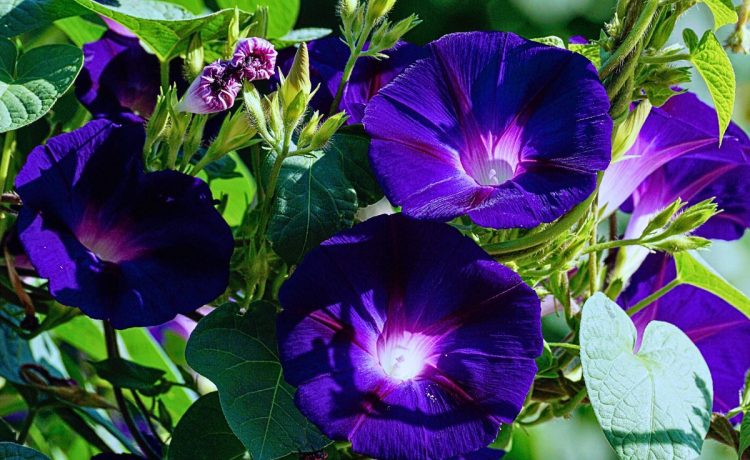juteralabs.com – Morning Glory flowers, with their vibrant colors and unique growth habits, have long been admired by gardeners, nature enthusiasts, and artists alike. These flowers, known for their ability to bloom in the early morning and close by midday, are a symbol of the fleeting beauty of life. But beyond their aesthetic appeal, Morning Glories hold a rich history and cultural significance.
What is a Morning Glory Flower?
Morning Glories belong to the Convolvulaceae family and are primarily known for their trumpet-shaped flowers. These flowers typically bloom in shades of purple, pink, blue, or white, though there are several varieties with different hues. The plants are perennial vines, often seen climbing fences, trellises, or other structures, and are known for their vigorous growth and sprawling nature. The name “Morning Glory” comes from the flower’s tendency to bloom in the early morning, only to close up as the day progresses.
Types of Morning Glory Flowers
There are many different species and varieties of Morning Glories. Some of the most popular ones include:
- Ipomoea tricolor: This is the most commonly known Morning Glory, often found in gardens. It features large, funnel-shaped flowers that range from blue to purple, sometimes with a white center.
- Ipomoea nil: Known for its wide range of colors, from deep blue to pink and purple, these flowers are often used in traditional Japanese gardens.
- Convolvulus sabatius: This type of Morning Glory is a trailing variety, often used in hanging baskets or as ground cover.
Growing Morning Glory Flowers
Morning Glories are relatively easy to grow and thrive in sunny spots with well-drained soil. They are commonly planted as annuals in colder climates but can be grown as perennials in warmer regions. These flowers require a lot of sunlight to bloom fully, so a location with at least six hours of direct sunlight a day is ideal.
Here are some key growing tips:
- Planting: Start seeds indoors about six weeks before the last frost date or directly sow them outdoors after the danger of frost has passed.
- Watering: While Morning Glories are drought-tolerant once established, they will bloom more profusely with regular watering, especially in dry conditions.
- Support: As climbing vines, Morning Glories need something to climb on, such as a trellis, fence, or arbor.
- Pruning: To keep the vines manageable and encourage more blooms, prune the plants back during the growing season.
Symbolism and Cultural Significance
Morning Glories have captured the imaginations of people around the world. In various cultures, they symbolize different things:
- In Chinese culture, the Morning Glory represents the fleeting nature of beauty and life. It is also a symbol of love and affection.
- In Victorian England, flowers were used to send messages, and the Morning Glory was often associated with love, affection, and a desire to meet again.
In modern times, the Morning Glory is often seen as a reminder of the passage of time, urging us to appreciate the beauty of the present moment before it fades away.
Conclusion
Morning Glory flowers are not only a stunning addition to any garden but also carry deep meanings in various cultural contexts. Their delicate beauty, short-lived blooms, and rapid growth make them a fascinating plant to grow and appreciate. Whether used in landscaping or as a symbol of love and fleeting beauty, Morning Glories continue to captivate hearts and minds around the world.

